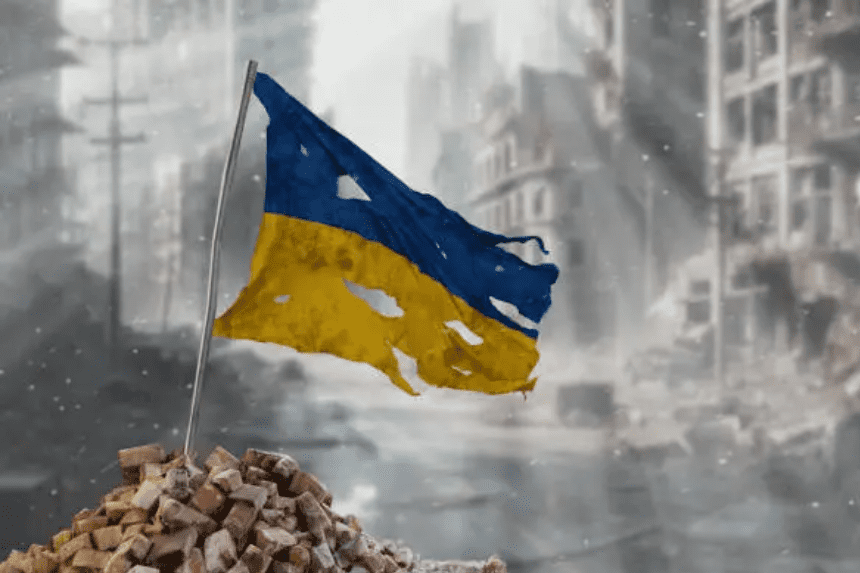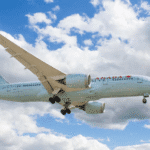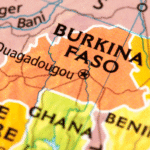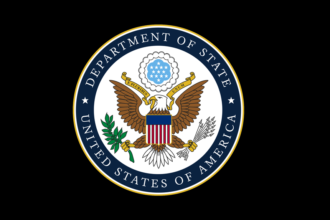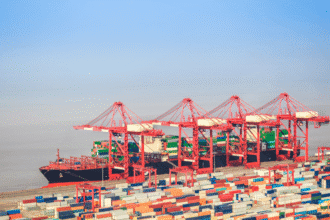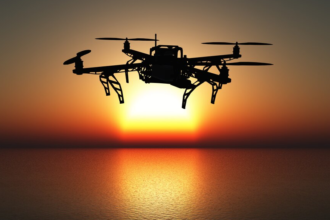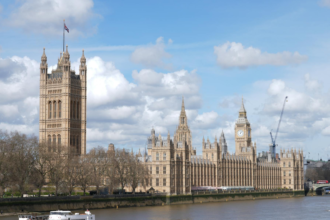Recent discussions between Ukrainian President Volodymyr Zelensky and former U.S. President Donald Trump have revolved around a big map of the Ukraine war that is prominently displayed in the Oval Office. The map illustrates divergent opinions on the current conflict and the future of Ukraine’s boundaries by emphasizing areas that are under Russian control.
In a media interview, Trump pointed to the map and highlighted the large swaths in red, which represent Russian-occupied territory. Zelensky, however, disputed the numbers, claiming that Ukraine still defends its own territory regardless of apparent dominance on paper.
With Zelensky adamantly rejecting any concessions and Trump indicating a willingness to consider territorial compromises, the visual portrayal has heightened talks about possible terms of peace.
What Is Displayed on the Oval Office Map?
Significant Russian occupation is seen on the battle map of Ukraine. Luhansk (99%) and large portions of Donetsk (76%), Zaporizhzhia (73%), and Kherson (73%), among other areas, are nearly completely under its control. The Russian presence in other areas, such as Kharkiv and Sumy, is minimal, at about 4% and 1%, respectively.
Although these numbers are generally in line with previous defense evaluations, they vary depending on the definition of control, whether it be Moscow’s assertions or actual presence. In Mykolaiv, for instance, even a small amount of control can be more indicative of a few isolated outposts than of administrative government.
Ukrainian officials contend that despite these figures, cities like Kramatorsk and Slovyansk are still governed by Ukraine and have sizable civilian populations. Here is the link to our article on Trump’s deadline.
How Do Trump and Zelensky Hold Differing Opinions?
During talks, Trump highlighted Russia’s military superiority and said that Ukraine could have to think about territory exchanges to reach a peace agreement. He added that the fate of the Donbas region is currently being discussed by European politicians as well.
Zelensky, however, displayed his chart of the conflict in Ukraine and asserted that Russia has only succeeded in capturing less than 1% more Ukrainian territory in the last 1,000 days. This amounts to around 5,842 square kilometers that Ukraine has gained since late 2022, according to the DeepStateUA mapping project.
Zelensky made a compelling case against ceding any area and pointed out that Ukraine had freed a sizable portion of territory that was taken in the early phases of the invasion, despite Russian advances.
What Is the Present Military Situation in Russia?
In some eastern areas, especially the area around Kreminna in Luhansk and Kupiansk in Kharkiv, Russia has demonstrated more vigor. Drone warfare has increased, according to military analysts, and is more precisely targeting Ukrainian artillery and infrastructure.
According to reports, Moscow has added between 30,000 and 35,000 soldiers per month to support its protracted campaigns. Russia is increasing its operational reserves while suffering significant battlefield casualties.
Nonetheless, advances are still being repelled by Ukrainian soldiers in a number of regions. In Donetsk, a recent attempt to grab land close to Dobropillya proved unsuccessful. Despite the siege, Ukraine continues to control over 6,600 square kilometers of the Donbas. Here is the link to our article on Drone Warfare Impact.
Is It Possible for Russia to Actually Take Over All Claimed Areas?
Although Russia has annexed Crimea and four other regions—Luhansk, Donetsk, Zaporizhzhia, and Kherson—it does not have complete authority over them. Even under the existing circumstances, Russia may need more than four more years to completely seize these regions, according to recent military estimates.
This lengthy timescale demonstrates the basic difference between Zelensky’s goal of complete territorial restoration and Trump’s more practical strategy, which is centered on short-term stability.
Final Thoughts
The Oval Office’s Ukraine war map is more than just a graphic representation—it symbolizes the widening gap between foreign leaders’ perspectives on the conflict’s trajectory. Zelensky views it as a reminder of what must be regained, while Trump sees it as a tool for negotiating peace through potential concessions. As military dynamics and diplomatic demands evolve, the Ukraine war map will continue to shape strategy, messaging, and possibly Ukraine’s future course.


